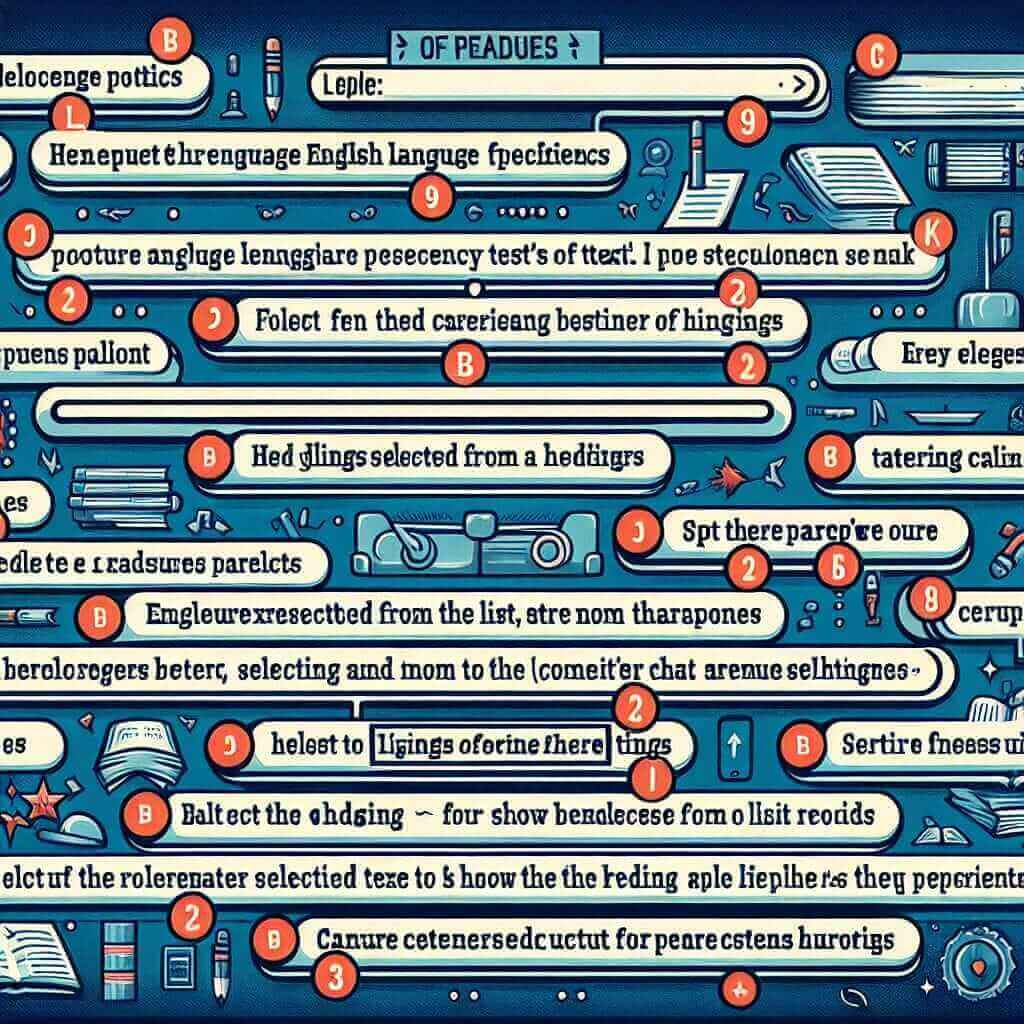In the IELTS Reading test, “List of Headings” questions are a common question type designed to assess your ability to understand the main idea of each paragraph in a text. You’ll be given a list of possible headings and you need to match the most appropriate heading to each paragraph. While seemingly straightforward, these questions can be tricky if you don’t approach them strategically.
This article will guide you through a step-by-step approach to tackle “List of Headings” questions effectively, helping you achieve a higher score in the IELTS Reading section.
Understanding List of Headings Questions
What are List of Headings Questions?
In essence, these questions test your ability to:
- Identify the main idea: Discern the central point of each paragraph.
- Paraphrase: Understand how the same idea can be expressed in different ways.
- Skim and scan effectively: Quickly locate key information in the text.
Why are they challenging?
- Distractors: The headings often include distractors—options that seem plausible but are not the main idea.
- Paraphrasing: The correct heading might not use the exact words from the paragraph.
- Time pressure: The IELTS Reading test is timed, so you need to be efficient.
Strategies for Tackling List of Headings Questions
1. Read the Instructions Carefully
Always start by reading the instructions thoroughly. They often contain crucial information like:
- Can you use a heading more than once? Some questions allow this, others don’t.
- How many headings are there compared to paragraphs? There will usually be more headings than paragraphs.
2. Skim the Headings First
Before you even glance at the passage, quickly read through the list of headings. This will:
- Give you an overview of the topics covered.
- Activate your background knowledge on the subject.
Example:
If the headings include “The Impact of Climate Change” and “Solutions to Global Warming,” you know the passage will likely be about environmental issues.
3. Identify Keywords in Headings
Underline or highlight keywords in each heading. These will be crucial when you’re scanning the paragraphs later.
Example:
Heading: The Role of Government in Promoting Renewable Energy
Keywords: Government, Promoting, Renewable Energy
4. Read the First and Last Sentence of Each Paragraph
These sentences often contain the main idea or provide a clear introduction and conclusion to the paragraph’s central theme.
5. Scan the Paragraph for Supporting Evidence
Look for keywords from the headings or their synonyms within the paragraph. Pay attention to:
- Topic sentences: Usually the first sentence, but not always.
- Examples and details: These support the main idea.
- Transition words: Words like “however,” “therefore,” and “in contrast” signal shifts in focus.
6. Match Headings to Paragraphs
Choose the heading that most accurately reflects the overall theme of the paragraph, not just a single detail mentioned. Remember:
- Don’t overthink it. If a heading seems like a good fit, it probably is.
- If you’re unsure, move on and come back to it later.
7. Double-Check Your Answers
Once you’ve matched all the headings, reread the headings and the corresponding paragraphs to ensure they make logical sense. Look out for any headings you might have missed.
Common Mistakes to Avoid
- Getting bogged down in details: Focus on the main idea, not specific facts.
- Misinterpreting synonyms and paraphrasing: The correct heading might express the same idea as the paragraph using different words.
- Rushing: Take your time to read carefully and understand the text.

Practice Makes Perfect
The best way to improve your performance on “List of Headings” questions is through consistent practice. Use IELTS practice tests and sample questions to hone your skills.
Conclusion
“List of Headings” questions can be challenging, but with a strategic approach and regular practice, you can master this question type. Remember to focus on understanding the main idea of each paragraph, utilize keywords, and be aware of common pitfalls. By applying the strategies outlined in this article, you’ll be well on your way to achieving success in your IELTS Reading test.